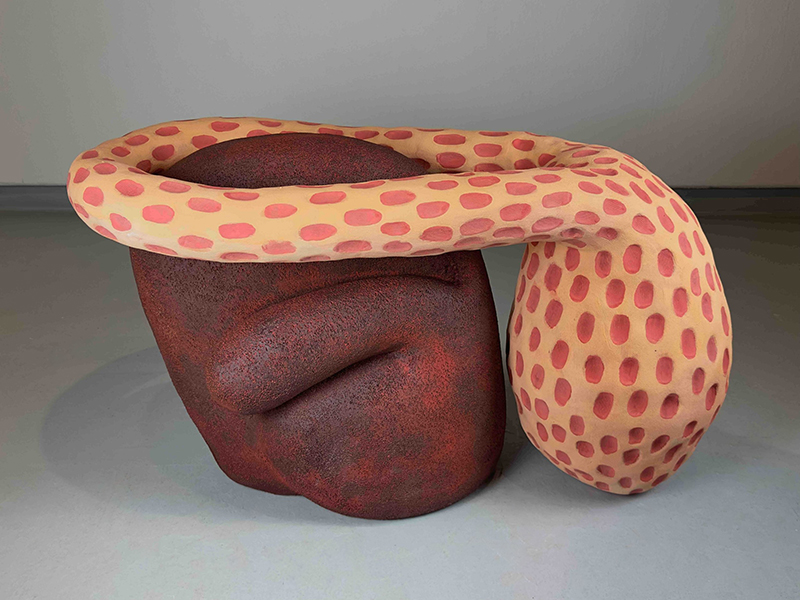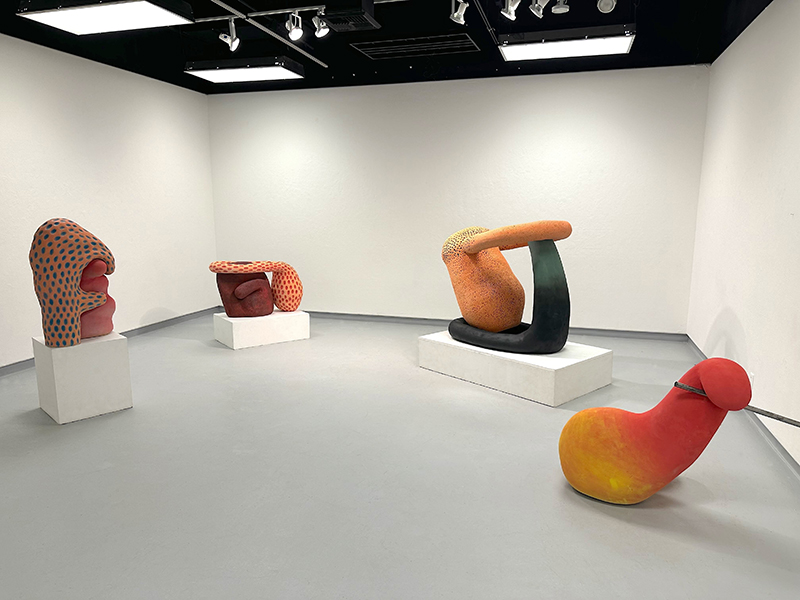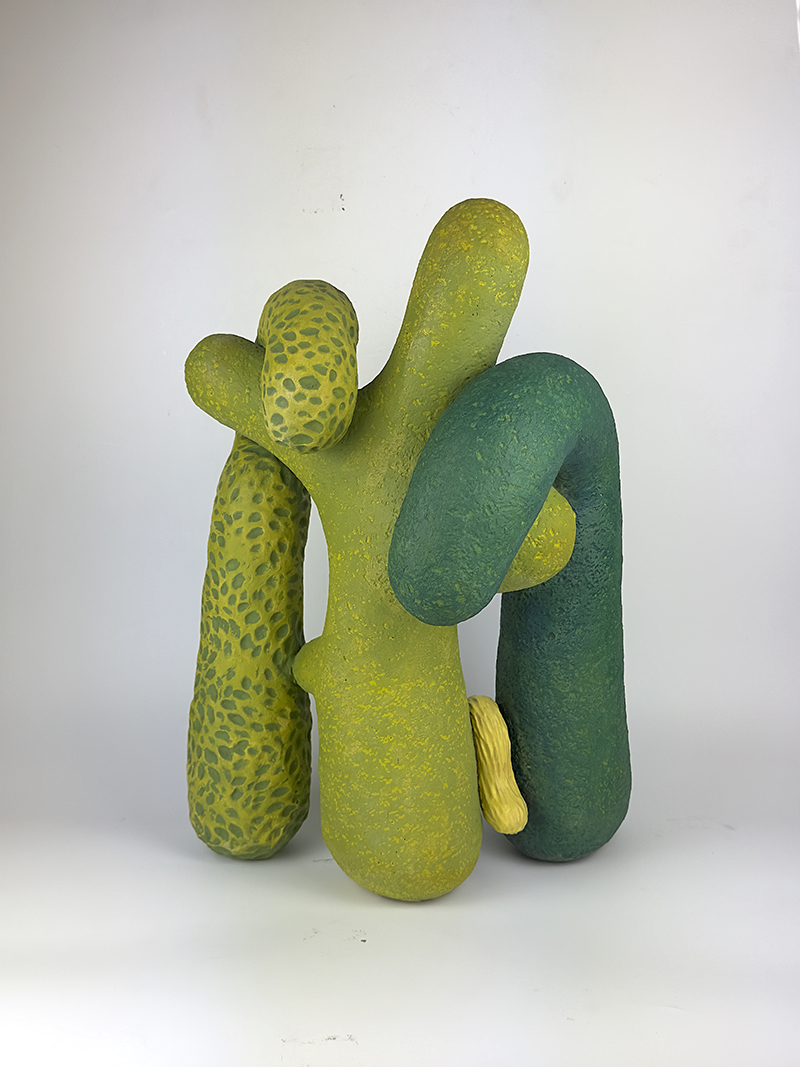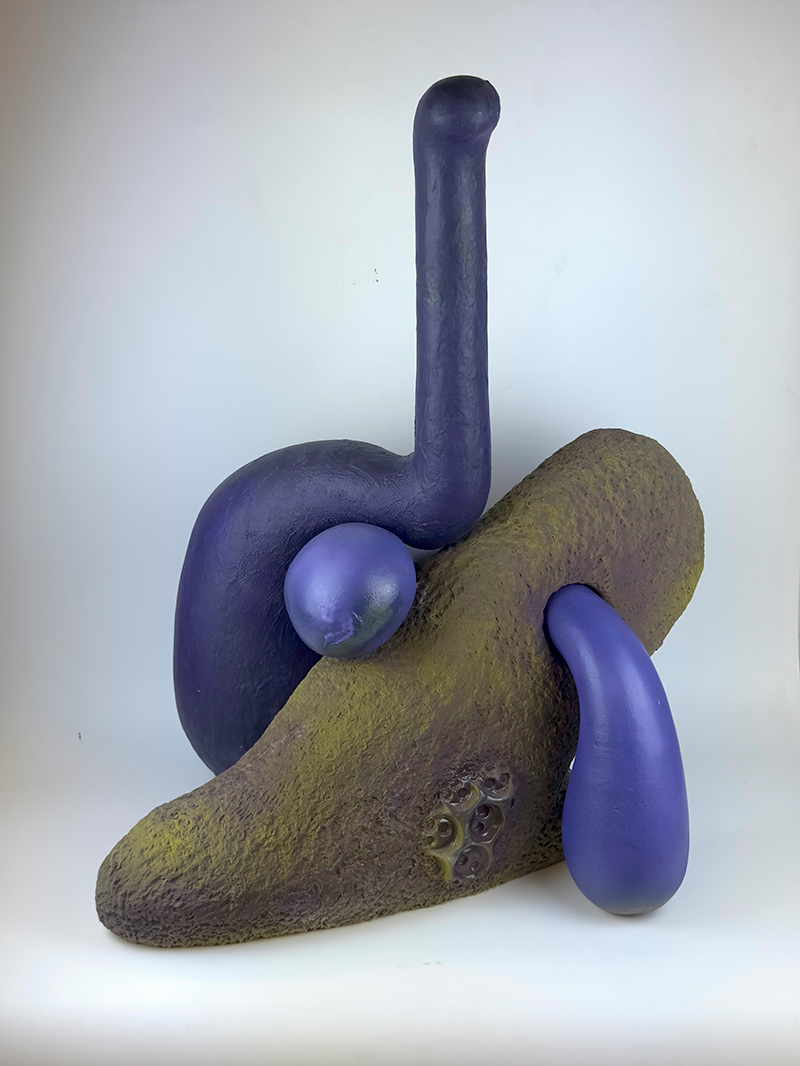
Tell us a little bit about how you first got into creating art.
My desire to create things out of clay and other materials dates back to my childhood. As a kid, I loved constructing elaborate block towers and digging enormous holes in my backyard. With each project, I pushed the limits of the materials until I either ran out or the structure collapsed. This playful experimentation evolved into a passion for building larger structures like skateboard ramps, bike jumps, and tree forts.
My father, a builder by trade, taught me some basic construction skills through hands-on work. He used to say, "We’re not building the piano, just the box it goes in," which encouraged a focus on speed and creativity, with refinement coming later. That mindset still influences my artwork today. I sculpt quickly and allow my forms to shift and evolve as I work, embracing a process that feels intuitive and dynamic.

I want art to evoke curiosity and raise questions about how it was made or what it represents
What artists or movements have had an impact on you?
I’m primarily influenced by biomorphic sculptors such as Jean Arp, Barbara Hepworth, Ken Price, and Isamu Noguchi. Their work possesses a sense of mystery that I find captivating. I want art to evoke curiosity and raise questions about how it was made or what it represents.
I’m also deeply inspired by contemporary wood sculptor Matthew Ronay. His work feels simultaneously strange and familiar. He draws viewers in with vibrant colors, then holds their attention with the obscurity of his forms and the ways they interact with one another. His ability to balance playfulness with complexity resonates with me, and I aim for my work to do the same.

The visual experience I create is significant because it offers viewers moments of curiosity and wonder
What is your source of inspiration?
I draw inspiration primarily from nature and the non-built environments. Expanding on this, I also look to microscopic and macroscopic worlds that lie within our bodies and exists in outer space.
My 15 years as a K-12 art teacher taught me to appreciate how children explore the world with curiosity and play. These are powerful tools for discovery, and I strive to bring that energy into my practice. The bright colors I use often resemble those of playgrounds or cartoons, evoking a sense of joy and whimsy.
I’m also inspired by expansive landscapes, particularly those in and around the Sierra Nevada mountain range. These places make me feel small in a good way, humbled yet free to explore, disappear, or blend into the surroundings.

My artwork combines these elements, serving as a way to explore the world around me and the intricacies of my own body and life. It’s a process that often leaves me with more questions than answers, but that sense of wonder is what keeps me engaged.
What is important to you about the visual experiences you create?
The visual experience I create is significant because it offers viewers moments of curiosity and wonder. The questions we ask about the world often reveal what we find meaningful. I rely on the ambiguous nature of my objects to reference things found in the world or our bodies without explicitly defining them.
This subjectivity invites conversation about the natural world and our relationships with it. I hope my work encourages people to spend time closely observing nature. Looking closely can reveal the individuality of plants, animals, and landscapes, fostering a deeper connection to and appreciation for the world around us.
Do you work from memory, life, photographs, or other resources? Describe your creative process.
I begin each artwork with a loose drawing in my sketchbook. Drawing is the closest I get to pure creation, which allows my forms to defy gravity and follow every spontaneous idea. Many of my drawings originate from the natural movement of my hand and arm, resulting in organic shapes. I layer these base drawings and add elements to create balanced compositions. From there, I select a few drawings to transform into maquettes. These small-scale models let me test the forms in three dimensions and ground them in reality, ensuring they’ll hold up physically. I also experiment with color and texture at this stage. After refining the maquettes, I decide which ones to scale up into larger sculptures. I aim to preserve the freshness of the original drawings by incorporating dynamic movement, balance, and interactions between parts. Scale plays a significant role in my work, highlighting relationships between pieces or inviting viewers to engage with human-sized forms. Lately, I’ve been exploring ways for my sculptures to bring a sense of mischief into gallery spaces. I see my work as an opportunity for overlooked parts of ourselves and our environments to re-emerge, reminding us of the beauty and awe we exist within.


